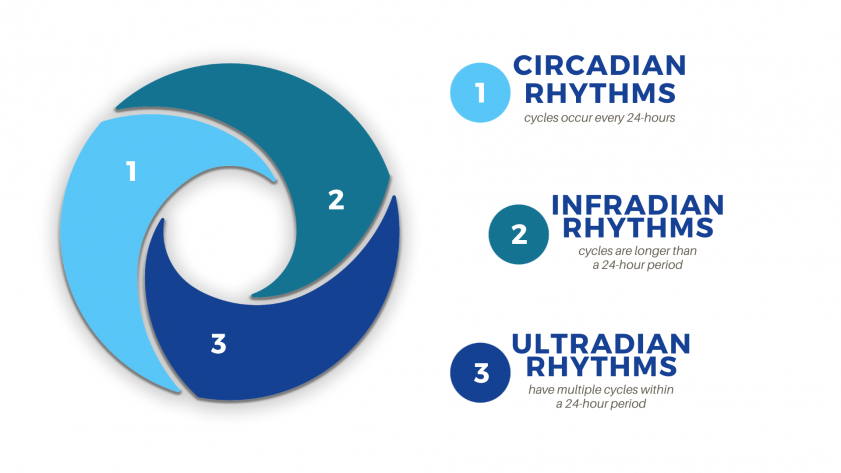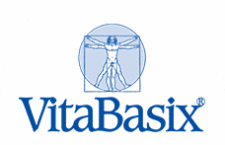Chances are, you’ve heard of the term “biological clock,” while this is often times associated with women’s fertility and childbearing abilities, the truth is, almost all of the body’s biological processes are coordinated and timed by these internal biological clocks. The human body is comprised of a variety of biological clocks and rhythms. While these rhythms were once a mystery to scientists and doctors, there is now a growing body of research that can explain how almost all of our biological processes, from sleep to digestion to blood pressure control and brain function, are all linked to internal clocks and rhythms.
This new understanding of the body’s rhythms and internal clocks is known as the science of chronobiology, or the study of internal clocks and timing, and this research is paving the way for new advances in health and medicine.
The Clocks and Rhythms of Life
There are many different types of internal clocks that govern our bodies. Three of which are circadian, ultradian and infradian rhythms.

Circadian rhythms, which are the most well recognized, correlate with the 24-hour light/dark cycle of the earth’s rotation. These types of rhythms control various processes that occur once per 24-hour period, such as the human sleep-wake cycle.
Ultradian rhythms, which govern shorter cycles such as hunger, heart rate, digestion and other processes that occur multiple times in a 24-hour day.
In contrast, infradian rhythms are cycles occur in cycles that last longer than the popular 24-hour circadian rhythms, with a complete cycle taking 28-hours or more. A good example of infradian rhythms are the hormonal cycles of adult human females, or the various cell processes and hormone levels that adjust according to the season.
These various body clocks work together to prepare our bodies for the demands of different times of the day, month, and year.
The Circadian Rhythm: The Master Clock
The circadian rhythm is the best understood of body’s internal clocks as it is present in nearly every known living organism. This 24-hour clock governs a diverse range of processes such as sleep, DNA repair, and cell regeneration.
While primitive cells are damaged by the sun and heat during the day, they are able to use the nighttime hours for necessary DNA repair and other healing processes. Although the human circadian rhythm is far more complex than the concept of daytime damage and evening repair, this formula is the most comprehensive explanation of how our body uses the night time hours as a time for cell repair, regeneration, and a chance to chemically prepare for important events. This evening reset ensures that all biological processes occur at the right time and in the right order.
How the Body’s Clocks Are Set
All clock-like and rhythmic processes are timed carefully by our brain, specifically, by the suprachiasmatic nucleus of the hypothalamus. The hypothalamus receives timing cues called zeitgebers, or external or environmental cues, and uses them to keep clocks in sync with each other and with the demands of our environment.
For the circadian rhythm, our retinas receive the zeitgeber of light from the environment around us and passes the light signal to the hypothalamus. The hypothalamus then signals the pineal gland to suppress melatonin production (a hormone that makes us sleepy) while telling other areas of the brain to increase production of hormones associated with wakefulness.
In contract, when our retinas sense lower, or a lack of external light, the hypothalamus assumes nightfall is coming. This is especially true if the lowered light is combined with other cues indicating night as well, such as a lower temperature. The hypothalamus then gives the pineal gland the green light to make melatonin, and the body prepares itself for sleep mode.
Internal Clocks and Your Health

The body’s internal clocks are not just important for our sleep patterns, but essential for whole body health as well. For example, if our internal clocks do not signal for DNA repair to occur, and this process is skipped or not taking place properly, the body’s cells will begin to lose their ability to function, which can then result in gene mutations, illness and can even lead to cancer.
Depending on the ability for our body to maintain proper internal clock cycles, these biological rhythms can either work to our benefit and ultimate well-being, or work against us. One branch of the science of chronobiology is chronopharmacology (also known as chronotherapy), which researches therapeutic approaches based on the basic principles of chronobiology and the understanding of the body’s rhythms and internal clocks.
Chronotherapy works effectively through combining the optimal ingredients and medication formulas, the right dosage amounts, and an understanding of the select organs or relationships involved, in order to deliver the substances at the most effective time of day to yield the best results with less side effects.
This type of research has led to many insights into treating diverse diseases such as diabetes and cardiovascular disease. Other research has taken this approach to ensure that chemotherapy is now timed to hit cancerous cells at the most vulnerable time in their cell cycle, which reduces the risk to healthy cells.
From a scientific perspective, the body’s internal clocks are fascinating, but they are even more fascinating from a medical standpoint. Understanding the complicated processes the body undergoes, and the various timing associated with them, is leading to a better understanding of the interaction between health and disease, and allowing researchers to develop new and more effective treatment options. Because our body’s biological clocks are essential to our health, focusing on maintaining and treating biological rhythms and rhythm disorders is a new and promising field of health care and preventative health.


